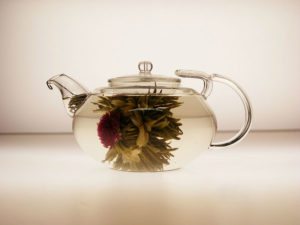 Tea is big business these days. From notable spots like New York City’s iconic, The Russian Tea Room and niche, boutique tea lounges in major metropolitan cities, to tea drinking destination restaurants such as Teaism and Japanese tea houses becoming mainstream to big business, tea is a hot restaurant menu trend. Even coffee giant Starbucks is getting into the game at a higher level with the reported recent retail purchase of Teavana for $620 million.
Tea is big business these days. From notable spots like New York City’s iconic, The Russian Tea Room and niche, boutique tea lounges in major metropolitan cities, to tea drinking destination restaurants such as Teaism and Japanese tea houses becoming mainstream to big business, tea is a hot restaurant menu trend. Even coffee giant Starbucks is getting into the game at a higher level with the reported recent retail purchase of Teavana for $620 million.
Yup, we said “Trend.” Considering that according to the Tea Association of the USA, legend has tea discovered by Chinese Emperor Shen-Nung over 5,000 years ago, when tea leaves accidentally blew into his pot of boiling water, then grew in popularity in 1600’s Europe, and by 1904 the U.S. developed iced tea and the modern day tea bag. Tea isn’t new to the culinary world, but it is gaining increasing popularity as we’ve become a more health-savvy and culinarily creative culture. In fact, on any given day in the U.S. over 158 million Americans are drinking tea.
Tea’s health benefits are key factors as to why it’s trending. As tea contains no sodium, fat, carbonation or sugar, it is virtually calorie-free and some believe therefore helps contribute to overall good health, making it a great restaurant menu choice. It’s also a good alternative to coffee, which many feel has grown too expensive in some ways – overtaken by a culture of commercialism.
It’s not just about the classic, soothing, tranquility in every sip; tea is being featured in food and beverage offerings all over the globe. Its versatility is part of its charm. From dynamic tea-flavored beverages and brothy soup bases to flavorful rubs for fish, meat, and poultry to pairing with foods in order to bring out their natural flavors (such as pairing spicy meat dishes with the strong, bold flavored black tea) and refreshing desserts (like yummy green tea ice cream) to tea cocktail beverages (hot toddy, anyone?) the options are endless.
photo courtesy of thewhistlingkettle.com
